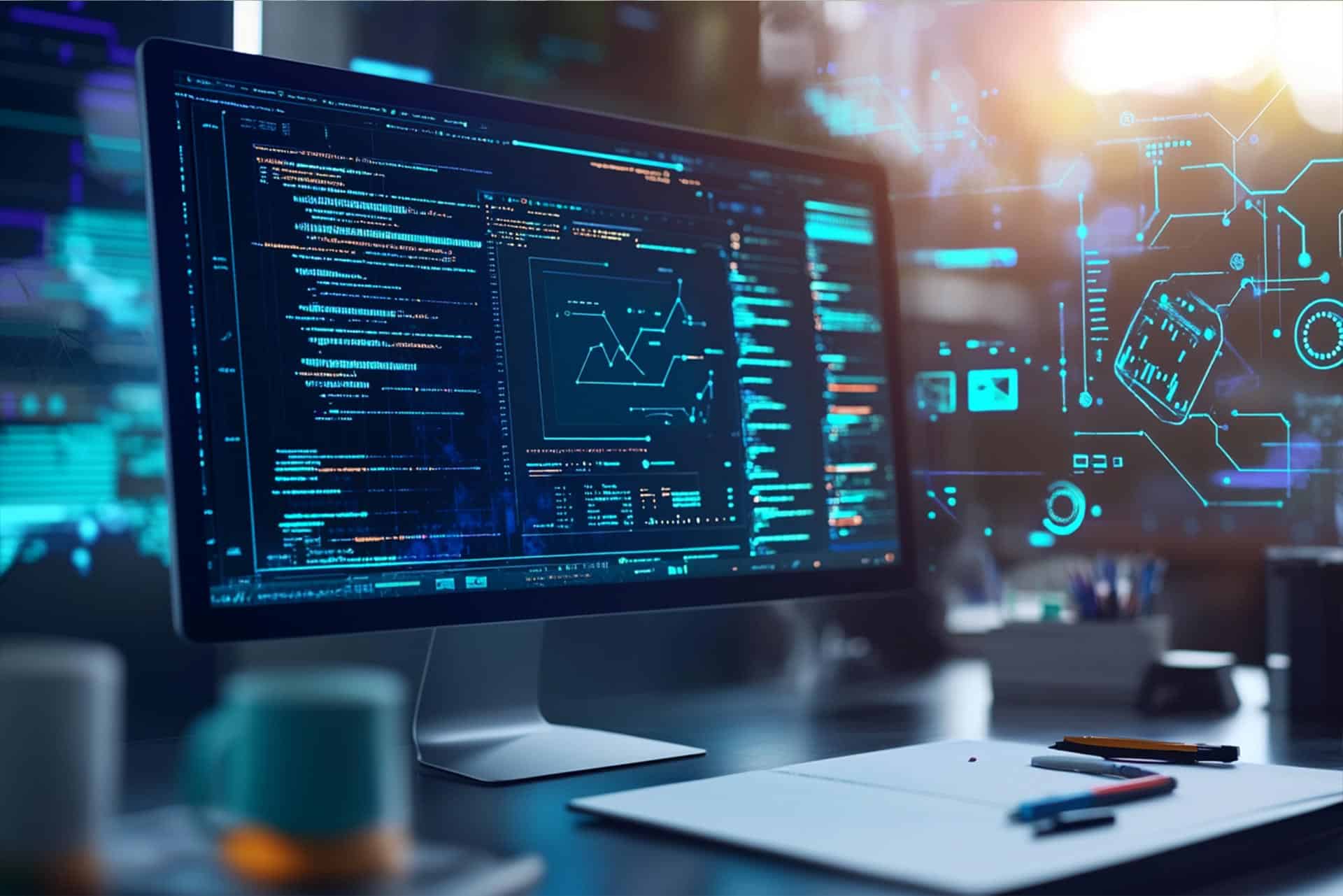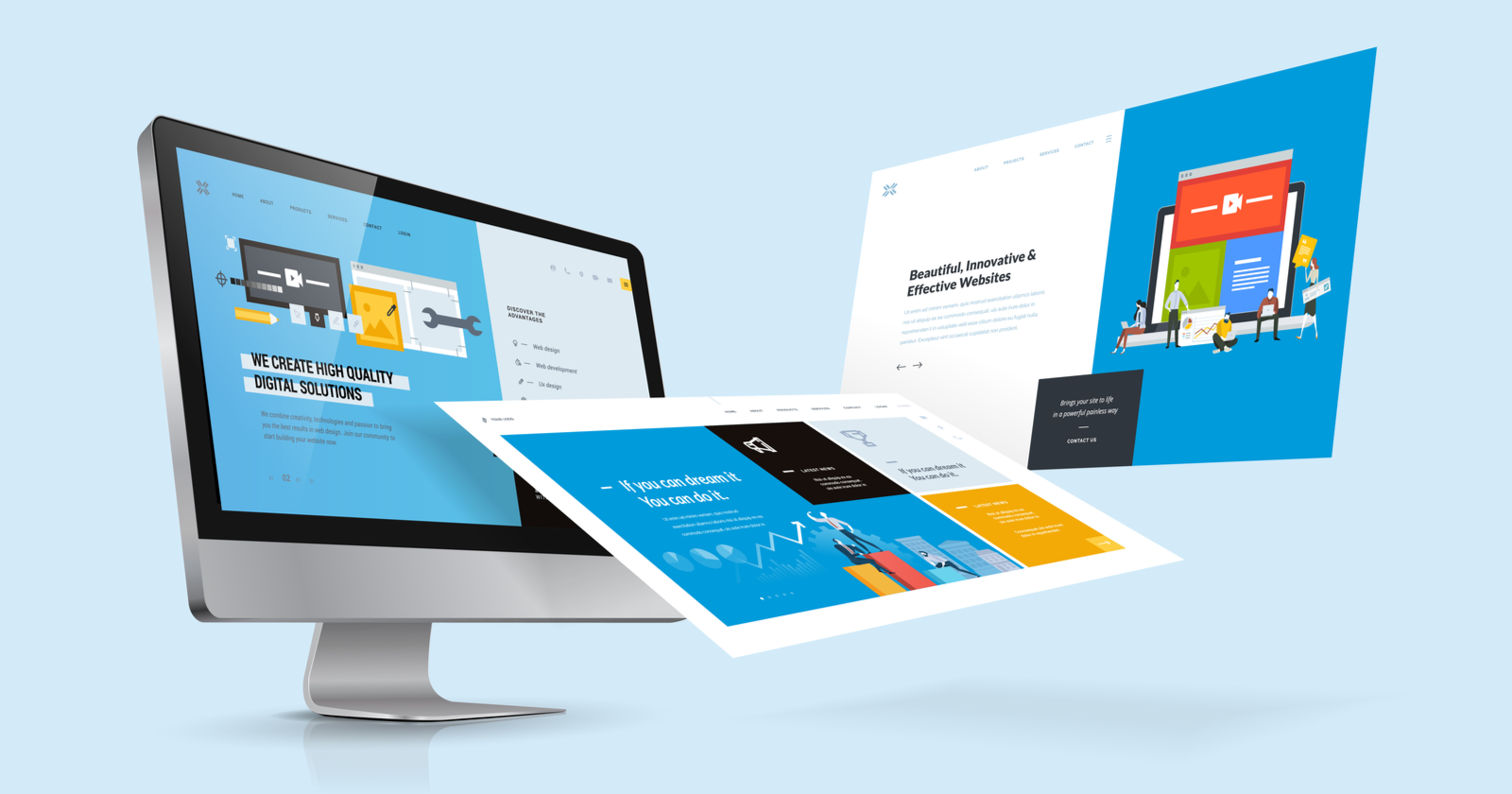How web development supports seamless mobile experiences
Checking Out the Different Kinds of Website Design and Their Distinct Benefits
The landscape of Web layout encompasses a variety of styles, each offering unique benefits that satisfy different user needs. Flat and minimal styles highlight clearness, while responsive and material designs enhance convenience throughout devices. Illustratory and typography-driven techniques aim to improve engagement and psychological vibration. Recognizing these varied kinds can considerably impact user experience and brand understanding. What lies underneath the surface area of these layout options?
Minimal Web Design

Minimal website design usually integrates a restricted color scheme and straightforward typography, which not just boosts looks but likewise reinforces brand name identity. The minimized complexity can result in faster packing times, better improving customer contentment. In addition, by reducing visual mess, users can engage with content better, leading to enhanced understanding and retention. In general, minimalist Web layout cultivates a smooth customer experience, making it a popular selection for brands aiming to share clarity and professionalism in their on the internet existence.
Responsive Website Design
Responsive website design has actually ended up being important in today's digital landscape, making certain mobile compatibility for customers throughout numerous gadgets. This approach greatly boosts customer experience by supplying seamless navigation and availability, no matter screen dimension. As even more individuals access the Web on smart devices and tablets, the relevance of responsive layout continues to expand.

Mobile Compatibility Relevance
As mobile phone usage proceeds to climb, making certain web sites are suitable with various display sizes has actually come to be necessary for efficient interaction and engagement. Mobile compatibility, frequently attained with responsive Web layout, permits websites to adjust flawlessly to smartphones, tablet computers, and other devices. This versatility not just reaches a more comprehensive target market however likewise improves brand credibility. An internet site that functions well on smart phones mirrors professionalism and trust and interest to individual requirements. Additionally, online search engine prioritize mobile-friendly sites in their rankings, making compatibility a crucial factor for on the internet visibility. By investing in mobile compatibility, businesses can boost their electronic existence and satisfy the growing number of customers that access info on the move. As a result, focusing on mobile-responsive design is critical in today's electronic landscape.
Improved Individual Experience

Flat Layout
Level style is a minimal method to website design that stresses simpleness and clarity. By eliminating three-dimensional elements such as structures, shadows, and gradients, flat design develops an aesthetically attractive interface that focuses on material and capability. This design advertises an intuitive navigation experience, as customers can swiftly identify vital features and activities without disturbance.
One of the main benefits of level design is its responsiveness across different tools and screen sizes. Its tidy lines and straightforward formats adjust seamlessly, guaranteeing a regular experience for users on mobile, tablet, or desktop systems. Additionally, flat layout usually integrates vibrant shades and typography, improving aesthetic effect and brand name recognition.
In addition, the simpleness integral in flat design causes much faster loading times, which adds favorably to user satisfaction - branding. On the whole, flat design continues to be a prominent option for modern-day Web growth, aligning with contemporary visual choices while supplying excellent functionality
Product Style
Product Layout stands for a design language established by Google that concentrates on creating a intuitive and cohesive customer experience across digital systems. This strategy emphasizes making use of grid-based formats, receptive computer animations, and deepness results such as lights and shadows, which assist to develop a feeling of pecking order and spatial relationships. By imitating the real world, Product Style enables customers to connect with digital user interfaces in a much more natural and interesting fashion.
One of the key advantages of Material Design is its adaptability throughout different gadgets and screen sizes, making sure a consistent experience for customers. Additionally, it advertises a clear aesthetic language that boosts usability, making it simpler for customers to navigate intricate applications. The consolidation of dynamic colors and vibrant typography also plays an essential function in attracting attention to crucial elements, thus improving total individual engagement - web design. Material Design has come to be a popular option among designers looking for to create useful and visually appealing web sites.
Typography-Driven Design
Typography-Driven Design concentrates on the calculated use type to boost the practical and visual facets of a site. This layout strategy focuses on typefaces, font sizes, spacing, and pecking order to develop aesthetic interest and guide customer experience. By meticulously selecting typography, developers can share important link brand name identification and stimulate emotions, making the material much more obtainable and interesting.
Efficient typography enhances readability and functionality, making sure that individuals can easily navigate the site and soak up details. The ideal mix of type can likewise establish a clear visual hierarchy, allowing customers to rapidly determine key messages find and contacts us to action.
A typography-driven approach can be adjusted to different devices, ensuring consistency across systems. This flexibility is crucial in today's multi-device landscape, where individual experience is vital. Inevitably, Typography-Driven Style serves not just as an artistic option but additionally as a useful aspect that significantly influences a web site's efficiency.
Illustratory Website Design
Illustratory website design uses visual narration techniques that can greatly enhance user involvement. By incorporating distinct images, sites can produce a memorable brand name identity that resonates with their audience. This strategy not only astounds visitors but also interacts messages in an aesthetically engaging way.
Aesthetic Storytelling Strategies
A multitude of Web designers employ visual narration techniques to develop engaging and immersive individual experiences. This strategy incorporates imagery, layout, and typography to narrate a story that reverberates with individuals on an emotional level. By integrating engaging visuals, designers can effectively share messages and stimulate feelings, directing site visitors via a brand name's journey. Infographics, computer animations, and interactive aspects serve to improve stories, making complex information more memorable and accessible. In addition, aesthetic narration can establish a cohesive brand identification, as constant imagery and styles reinforce core worths and messages. Ultimately, this technique not just captivates individuals however also fosters a much deeper connection with the content, urging expedition and retention. Through experienced application, visual storytelling transforms conventional Web experiences right into meaningful and vibrant interactions.
Enhancing Customer Interaction
Efficient website design substantially enhances individual interaction by leveraging illustrative components that attract attention and foster communication. Illustrations can you could try these out simplify complex principles, making them a lot more approachable and memorable for customers. They break the monotony of text-heavy pages, developing aesthetic breaks that welcome exploration. Furthermore, distinct pictures can evoke emotions, encouraging users to get in touch with the content on a deeper degree. Interactive elements, such as computer animations or float impacts, can additionally boost engagement by welcoming users to participate actively as opposed to passively taking in details. This method not just maintains visitors on the website longer however additionally enhances the likelihood of return gos to. Eventually, efficient illustrative website design changes the customer experience, making it extra impactful and delightful.
Branding Via Picture
Aesthetic aspects play a significant role fit a brand's identity, and pictures are a powerful device in this respect. Illustratory Web layout permits brands to convey their special individuality and values via personalized artwork. This strategy fosters a much deeper psychological connection with the target market, boosting memorability and involvement. By integrating images, brands can differentiate themselves in a jampacked market, creating a distinct visual story that reverberates with their target group. Additionally, pictures can streamline complex ideas and make web content a lot more accessible, efficiently interacting messages in an appealing way. In general, branding through illustration not just improves the user experience but additionally enhances brand name acknowledgment, making it a beneficial technique for services intending to develop a solid online existence.
Often Asked Concerns
How Do I Pick the Right Web Style Kind for My Service?
To pick the right Web layout type for an organization, one should examine goals, target market, and industry requirements. Evaluating individual experience and performance will certainly lead the selection process for perfect involvement and performance.
What Tools Are Ideal for Creating Various Website Design Designs?
Popular tools for creating diverse website design styles include Adobe XD, Figma, Sketch, and WordPress. Each offers unique attributes tailored to various style requirements, allowing designers to build aesthetically attractive and functional websites efficiently.
Exactly How Much Does Expert Website Design Generally Price?
Expert website design generally costs in between $2,000 and $10,000, relying on intricacy, functions, and developer proficiency. Personalized services and continuous upkeep might increase expenses, while layouts can offer more economical options for simpler tasks.
Can I Combine Multiple Website Design Enters Successfully?
Yes, combining several Web design types can be effective. By incorporating elements from various styles, designers can produce one-of-a-kind, appealing customer experiences that cater to varied target markets while improving performance and visual appeal.
How Do Design Fads Influence User Experience and Interaction?
Layout trends considerably influence user experience and engagement by enhancing aesthetic allure, enhancing navigation, and cultivating psychological links - web design. Staying updated with patterns allows developers to create intuitive interfaces that resonate with users and encourage prolonged interactions
Level and minimalist designs emphasize clearness, while responsive and material designs enhance flexibility across gadgets. It might appear counterintuitive, minimalist Web layout stresses simplicity to improve customer experience. Receptive Web layout plays a vital function in enhancing customer experience by making sure that a web site adapts flawlessly to numerous screen dimensions and gadgets. Flat design is a minimal strategy to Web layout that stresses simpleness and quality. Material Design stands for a style language established by Google that focuses on creating a user-friendly and cohesive user experience throughout digital systems.